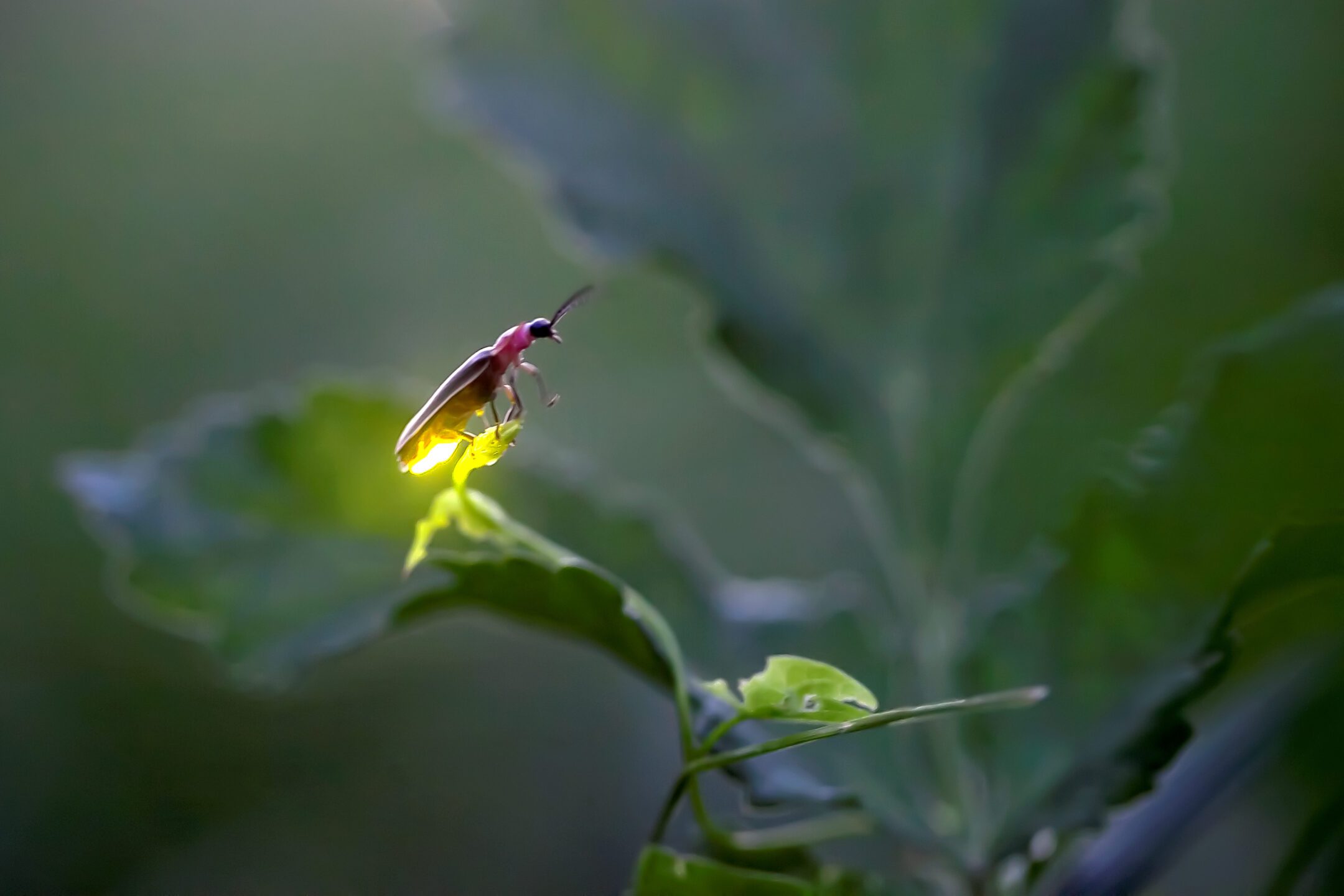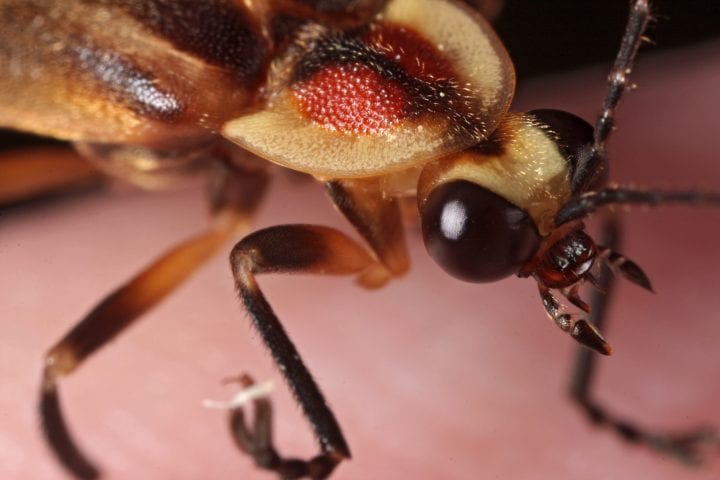The common eastern firefly produces light through a chemical reaction that energizes a molecule so it can release a photon.
Introduction
Few natural phenomena can match the magic of fireflies flashing in the tall grass on a summer’s night.
As dusk falls on grassy meadows and forest edges of the eastern and central United States, males of the species Photinus pyralis flit about, flicking on and off bioluminescent lanterns in their abdomens. On the ground, females flash in response, attracting the males for a reproductive rendezvous.

The Strategy
The romantic function of the flash has long been known. What’s more recently been uncovered is a clear understanding of exactly how it happens. Scientists have tracked the trait down to a set of five molecules located in light-producing cells called photocytes that line a firefly’s lantern: luciferin, luciferase, adenosine triphosphate (ATP), nitric oxide (NO), and oxygen.
Insects do not have lungs like humans do, but instead transport oxygen into their bodies through tubes called tracheoles. Oxygen travels through the tracheoles and enters the photocytes, where it binds to mitochondria. Normally the mitochondria would use the oxygen to release energy for regular cellular processes. But when it’s time to glow, fireflies send nitric oxide to bind to the mitochondria instead, freeing up the oxygen to fuel the light show about to begin. The oxygen enters another cellular structure, the peroxisome, and that’s where the fun begins.
Inside the peroxisome, bioluminescent reactions occur using luciferase, an enzyme with customized cubbyholes (called “binding sites”) for luciferin and ATP. The luciferin and ATP tuck themselves into the binding sites, which bring the two molecules close enough to each other that they can combine to form a luciferin-ATP complex.
A molecule of the freed-up oxygen then combines with the complex to form oxyluciferin, an “excited” molecule that’s eager to release a burst of energy. When it does, it releases it in the form of a photon—a packet of light—creating the characteristic yellow-green glow. Another enzyme, luciferin-regenerating enzyme, then turns the oxyluciferin back into luciferin, ready to make another flash.

This video illustrates the light-producing chemical reaction that occurs within a firefly's body.
The Potential
Because fireflies produce light without excess heat, mimicking their methods may help pave the way to developing more energy-efficient artificial light sources. And the mechanism of using the presence of a single molecule (in this case, oxygen) as an on-switch can inspire new ways to alternate between light and darkness over extremely short time periods––an effect that could be useful in display screens and other electronics.
Additionally, because it needs ATP to glow and ATP is found in microorganisms, the luciferin-luciferase combination has been used to detect the presence of germs in beverages such as soy milk and tea.










